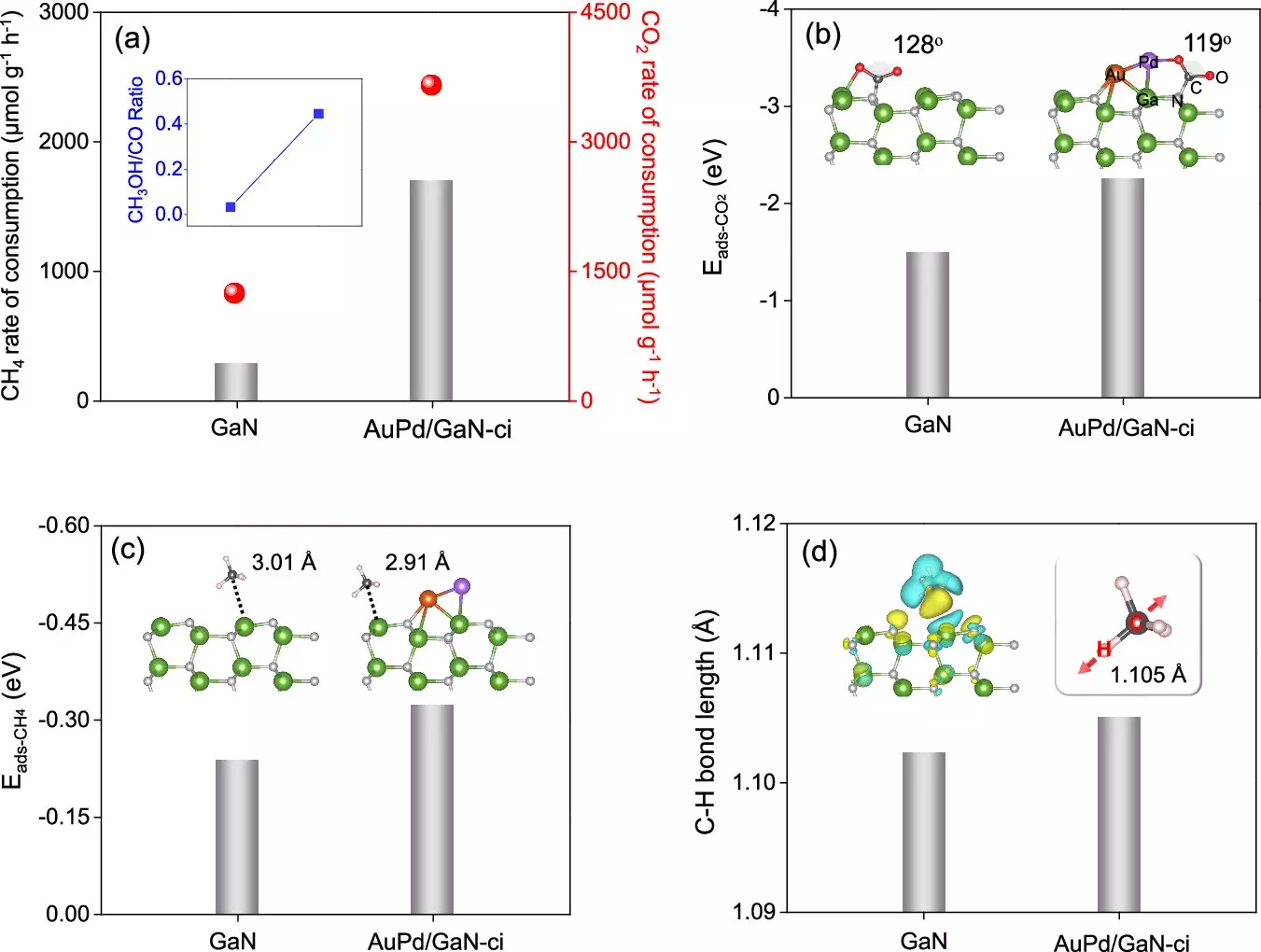Recent advancements from researchers at McGill University have unveiled a groundbreaking method for utilizing sunlight to convert two of the most prevalent greenhouse gases—methane and carbon dioxide—into valuable and sustainable chemicals. This significant discovery not only presents a viable solution to mitigate climate change but also opens up new avenues for producing eco-friendly industrial materials. The research underscores a key innovation: harnessing natural processes akin to photosynthesis, where plants utilize sunlight to transform environmental resources into energy.
The innovative process introduced by the research team involves a light-activated reaction that efficiently converts both methane and carbon dioxide into green methanol and carbon monoxide. These products are not only essential to the chemical and energy industries but also highlight a strategic advancement in reducing environmental harm. Hui Su, a Postdoctoral Fellow involved in the project, encapsulated the transformative potential succinctly: envisioning a scenario where industrial emissions could serve as a resource for generating clean fuels and essential materials.
At the heart of this pioneering process lies a unique catalyst composed of gold, palladium, and gallium nitride. When illuminated by sunlight, the catalyst facilitates a reaction that allows an oxygen atom from carbon dioxide to bond with a methane molecule, leading to the synthesis of green methanol. The production of carbon monoxide as a byproduct merely emphasizes the efficiency of this mechanism. The necessity for traditional, energy-intensive methods—often requiring extreme heat or corrosive substances—has been dramatically reduced, enabling a room-temperature chemical reaction that is both accessible and sustainable.
This research holds immense significance, particularly in the context of global initiatives aimed at achieving net-zero emissions, such as Canada’s ambitious target for 2050. Senior researcher Chao-Jun Li, a distinguished member of McGill’s Department of Chemistry, emphasized the dual nature of this achievement: transforming an ecological crisis into a catalyst for sustainable innovation. The pursuit of renewable energy sources and lower carbon footprints is increasingly vital in a world driven by both environmental challenges and industrial demands.
Implications for the Future
The implications of this research extend far beyond academic curiosity; it introduces a practical solution that can be scaled for real-world applications. As countries around the globe grapple with their environmental responsibilities, findings like those emerging from McGill University offer a glimpse into a future where waste is minimized, and resources are maximized. By turning hazardous emissions into useful compounds, this new chemical process not only contributes to a cleaner planet but also supports the transition towards a circular economy where sustainability is the cornerstone of progress.
McGill University’s innovative research presents a hopeful perspective on combating climate change by leveraging technology to repurpose harmful emissions. Such revolutionary approaches underscore the importance of continued exploration and investment in sustainable science, paving the way for a more resilient and eco-conscious world.


Leave a Reply